This post, Part Two in my Apple Series, outlines the process for making Peasant Bread using a sourdough starter made from apples.
As I shared in Part One, I went on a hike with a local Meetup group a few weeks ago. Before we went on the hike, we picked apples at an orchard. Then we hiked to a gorgeous waterfall. The view of the waterfall was our reward for driving up a long winding dirt road and hiking back into the woods.
A fun hike, a gorgeous waterfall, and delicious apples were all part of the process of making this peasant bread.
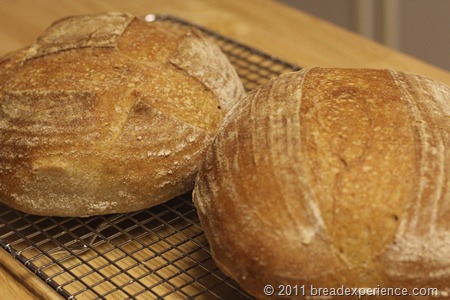
Part one focused on making a sourdough starter using apples.
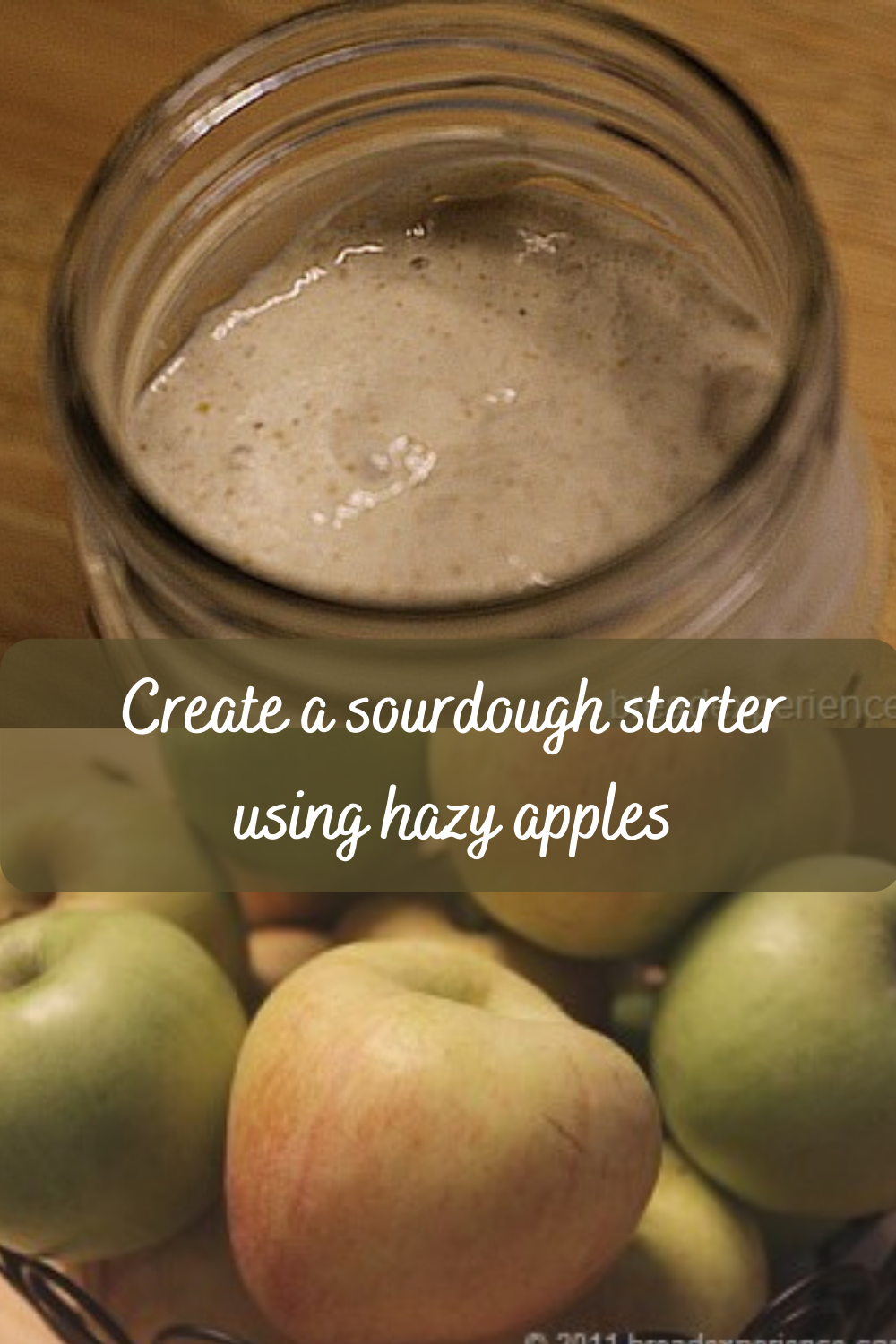
Part three features Tomato Bread Soup (Pappa al Pomodoro) made with bread cubes from the peasant bread.
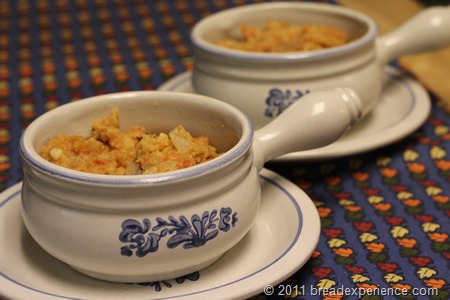
Peasant Bread
Peasant Bread typically refers to a rustic European bread made with whole wheat flour or rye flour. It may also contain coarsely ground grains. Due to the addition of whole grains, it is usually a very healthy bread.
This formula uses a bit of whole wheat flour and rye flour but the majority of flour is all-purpose or bread flour. I used a mixture of whole wheat and white all-purpose flour so mine has a bit more whole wheat than the original formula.
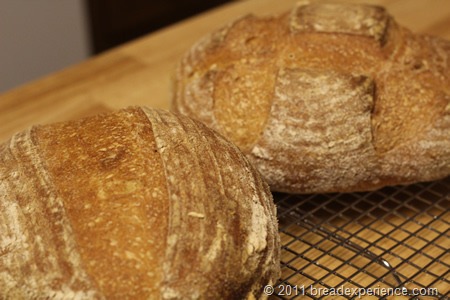
Source: William Alexander’s 52 Loaves
Makes: Two 1-pound loaves
Refer to the list of ingredients here.
Learn the process of building an apple starter here.
Process:
1. Prepare the dough
At least 2 hours before beginning (or the night before), feed the levain as follows: Remove levain from refrigerator and add equal parts flour and room-temperature water (if you use about 130 g each, it will replenish what you use in the bread). Stir well, and let it rest on the counter with the cover slightly ajar. The starter should be bubbly and lively by the time you begin the bread.
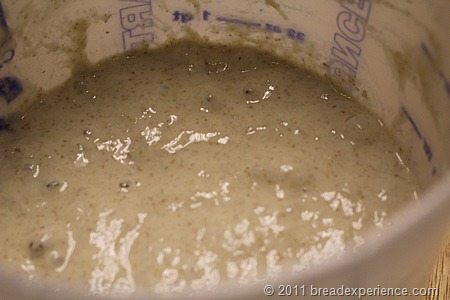
Place a large bowl on your scale and zero out the scale. Now add the flours, one at a time, zeroing out the scale after each addition.
Separately weigh and add the salt. Add the levain, a dash of instant yeast, and the water. Mix thoroughly using wet hands or a wooden spoon until the dough is thoroughly mixed.
Place a piece of plastic wrap misted with spray oil directly on the dough. Let the dough autolyse (rest) for 20-25 minutes.
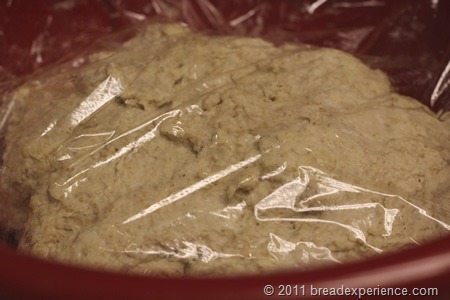
2. Kneading and fermentation
Knead by hand 7-9 minutes until the dough is smooth and elastic.
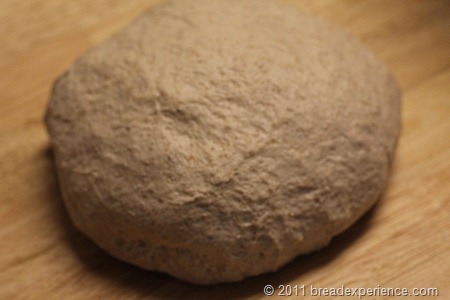
Clean and dry the mixing bowl, mist with spray oil, and return the dough to the bowl. Place the plastic wrap back onto the dough. Ferment at room temperature (70 degrees) for 4 to 5 hours.
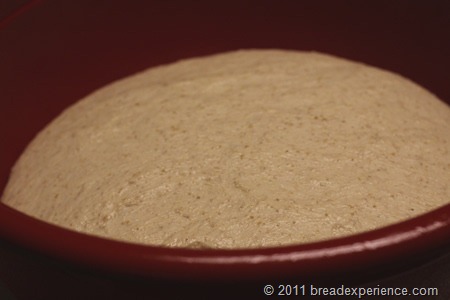
3. Form and proof the boule
Transfer the dough to a floured counter. Gently press down to form a round about an inch thick. Don’t press so hard that you press out the gas bubbles.
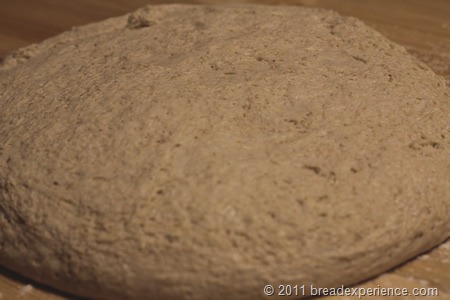
Fold the edges into the center. Form the round into a ball (boule) by moving around the edge several times and pulling the dough tight to create surface tension.
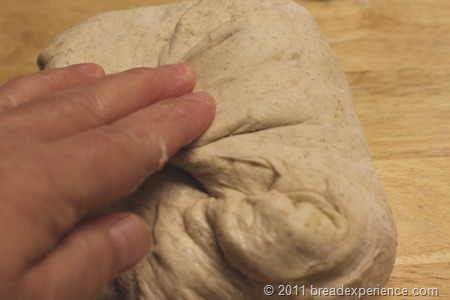
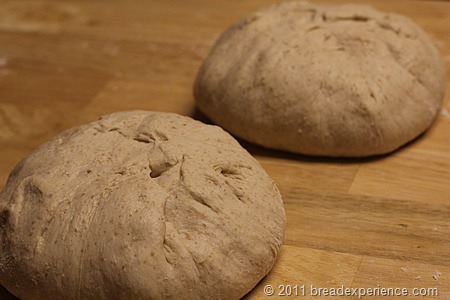
Place the loaves in banneton basket seam-side up, then cover with the greased plastic wrap. Let it proof for 1½ to 2 hours. While the dough is proofing, place a baking stone in lower third of oven, and a steam pan on the bottom shelf. Preheat the oven to its highest setting.
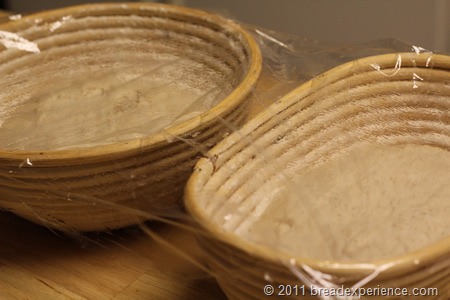
4. Score and bake
After 1 1/2 to 2 hours, the dough should have increased in volume by about half, and feel slightly springy. Transfer each loaf to a peel that is liberally sprinkled with rice flour or corn meal (or covered with a piece of parchment paper). Sprinkle the top of the loaf with rye or rice flour if you want that country “dusted” look. I proofed the dough in a banneton basket sprinkled with all-purpose and rice flour so I didn’t do this additional step since it already had flour on it.
Make several slashes with your lame or a serrated knife.
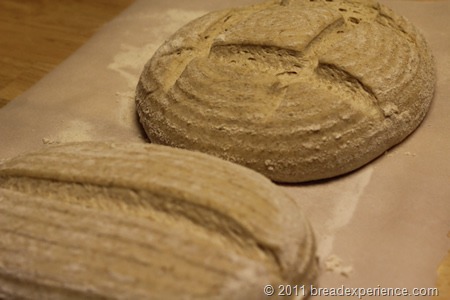
Immediately slide loaf (including paper, if using parchment) onto the baking stone, and add 1 cup water to the steam pan. Do this quickly so you don’t let too much heat out through the open oven door.
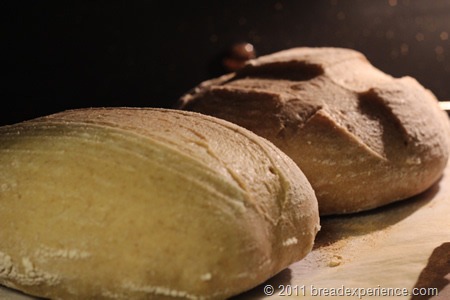
Set oven temperature to 480 degrees F. After 20-25 minutes, or when loaves have turned dark brown, reduce oven temperature to 425 degrees F. Bake until loaves register 210 degrees F in center, about 50 to 60 minutes, with an instant-read thermometer, or until the bread sounds hollow on the bottom when thumped. Return the loaves to the oven, with oven off and door closed, for 10 to 15 minutes.
Remove bread to a rack and cool for at least 2 hours before serving.
5. Slice and enjoy! Or, save it to use in another dish like I did. See below.
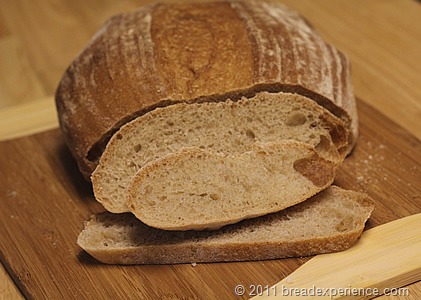
Since this was the first time I had baked bread with my new apple starter, the bread didn’t have the full flavor that you would expect from a sourdough bread. This bread will taste better after the starter has developed a little bit more so I’ll try it again sometime.
I had another reason for making this bread so it didn’t bother me that it lacked the full flavor. I just sliced the loaf into cubes for the next part in my series. Part 3 of my apple series features a dish made with day-old Peasant Bread. Go to Tomato Bread Soup (Pappa al Pomodoro) to find out the rest of the story.
Happy Baking!
Cathy
Elwood says
I can hardly wait until my apple starter is ready to make this loaf!
Cathy (breadexperience) says
Yes, it’s a fun one. Let me know how you like it!